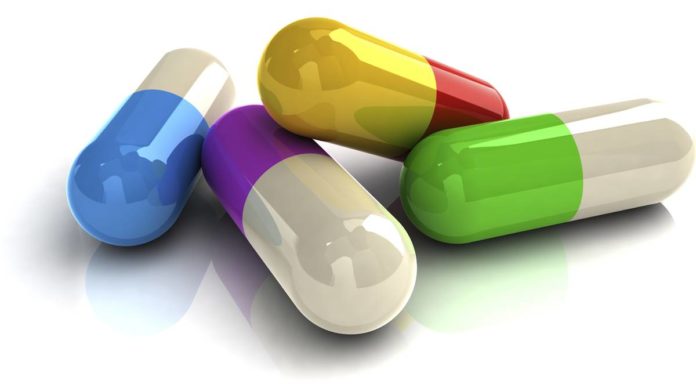
The age of ingestible electronics or digital medicine. Picture: iStock
Called ingestible electronics or digital medicine, devices like it will soon collect information about your heart rate, activity levels, skin temperature, reaction to drugs and more.
A report from the US Network for Excellence in Health Innovation from September 2010 said about 50per cent of patients didn’t take prescription medication as directed, adding that medication adherence problems in the US costs $US290billion ($376 billion) in unnecessary healthcare spending.
It’s something doctors hope ingestible electronics will alleviate. A March 2014 letter written by doctors to the Journal of Clinical Hypertension said such methods provided ‘‘useful information … to improve blood pressure’’.
After raising funding of $203million, California-based Proteus Digital Health offered the sensor and patch system to consumers, and a spokeswoman told Fairfax Media tests with more than 1000 patients had been positive.
Even an impartial view seems to confirm that we’d be perfectly happy to swallow computers. According to Dr Sean Young of the Department of Family Medicine at the University of California at Los Angeles’ Centre for Digital Behaviour, there haven’t been any public clinical studies on consumer acceptance of the technology, but we’re becoming more comfortable using technology to monitor behaviour as long as we see the benefit.
‘‘Ingestibles will be no different,’’ he says. ‘‘It takes time to gain technology adoption and because of the many potential health, medical, social and policy risks and ethical issues related to ingestibles, it will take a while for people to widely adopt them. At this stage we’re still building the technology and the initial user base for testing. We need evidence of the utility of using them and the early adopters will be the guinea pigs who can share their experiences and provide evidence of how and when to use them.’’
Young adds that adoption will then happen when – as with any technology – ingestibles demonstrate their use in everyday life. ‘‘The health and medical area is a good example of how ingestibles can be used as a less invasive method compared to some current diagnostic tools,’’ he says.
The technology might seem benign but it’s the ethics that might be hard to swallow. Insurance companies assessing medical risk or law enforcement testing for blood alcohol using digital medicine without your consent are just two possible abuses of the resulting data.
Proteus says it complies with ‘‘applicable privacy regulations in the United States and European Union to protect the system components’’, but it might not be enough to convince consumers.
A November 2014 report by ISACA (the Information Systems Audit and Control Association) cited concerns about the ‘‘internet of things’’ (IoT) – the name given for the next phase of connectivity when machines will talk to one another – in general, with 26 per cent of respondents concerned about devices being hacked and 26 per cent concerned about not knowing how the information collected by IoT devices will be used.
‘‘One of the first questions I get when giving a presentation on using sensors and data to monitor behaviour and health is related to ethics,’’ agrees UCLA’s Young. ‘‘People are concerned about their data being collected, monitored, stored, and stolen.’’
But he also thinks more widespread use of medical data will help educate us about what to watch out for. ‘‘We’ve seen insurance companies try to access customer data during the eligibility or claims process to determine health benefits. We’re just beginning to learn about the risks. As devices begin to be more widely adopted, we’ll have a better idea of what the future data risks may bring, and will probably have a larger representation in government for whether and how to regulate these risks.’’
There are also moves to secure what might be thought of as the health cloud. In December 2013, CNBC.com reported on an Intel program to assure secure end-to-end data management from inside the body to the cloud and then to a doctor. As general manager of Intel’s health and life sciences group Eric Dishman said, ‘‘We are going to save lives but we need to protect that data first.’’
But if the age of Edward Snowden and the recent wide-scale hacking of Sony have taught us anything, nothing is safe.
In the CNBC.com story, Electronic Frontier Foundation’s lead technologist Peter Eckersley voices the concerns of many people. ‘‘Unfortunately, there just isn’t much we can do in today’s world to protect ourselves from corporations or governments having access to all of this information like where we go, who we meet with, what we think and what we read.’’
Still, Proteus Digital Health spokeswoman Robin Suchan doesn’t think people will be bothered. ‘‘The important thing is the consumer understands the value they are getting from the product,’’ she says. ‘‘It’s not about the technology, it’s about how the product helps them make better health choices each day.’’
